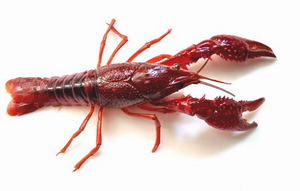
Introduction
- Haff disease is an unexplained rhabdomyolysis (breakdown of skeletal muscle fibers) in a person who ingested fish within the 24 hours before onset of illness. It was first reported in the Baltic region in 1924 . In the following nine years, about 1 000 persons were also affected in the region.
- Since then, the disease has been reported in various countries including Sweden, the former Soviet Union, the United States, Brazil and China. The disease involved consumption of mostly cooked freshwater fish (i.e. burbot, eel, pike, buffalo, silver dollar, freshwater pompano, etc.) and red swamp crayfish.
Safety and Public Health Significance
- Haff disease typically presents with muscle weakness, muscle pain, muscle rigidity and dark brown urine. However, neurologic symptoms (i.e. symptoms caused by the nervous system such as numbness and paralysis) are absent. This is different from poisoning caused by the consumption of some seafood (e.g. paralytic shellfish poisoning, ciguatera poisoning, puffer fish poisoning, etc.). The incubation period is reported to be about 8 hours, with a range of 6–21 hours after eating the affected freshwater fish or red swamp crayfish.
- Rhabdomyolysis is characterized by disintegration of skeletal muscle fibers, resulting in intracellular contents (including myoglobin, an oxygen-binding protein found in skeletal muscles) being released into the bloodstream. Myoglobin circulates to the kidneys and precipitates in their microscopic filtering structures – the renal tubules, causing obstruction and acute renal failure. Therefore, the condition can be potentially life-threatening when severe. There are actually more common causes of rhabdomyolysis like crush injury, overexertion, alcohol abuse, congenital metabolic myopathies, heat and cold injury, drugs and toxins, etc.
- The cause of Haff disease remains unclear at the moment. It is suspected to be caused by a heat-stable toxin that accumulates in the implicated food. However, chemical analysis of incriminated food (i.e. red swamp crayfish and fish), blood and urine samples from patients so far did not yield any possible toxins, drugs and hazardous elements. Some people suspected the improper use of washing solutions (such as solutions containing oxalic acid or sodium hydroxide) to clean crayfish would lead to rhabdomyolysis; however, oxalic acid or sodium hydroxide would not induce symptoms similar to that of rhabdomyolysis.
Crayfish and Haff Disease
- To date, Haff disease associated with the consumption of red swamp crayfish (Procambarus clarkii ) was reported only in two countries: China and the United States. The first published outbreak involving six cases after consumption of red swamp crayfish in Beijing in 2000. In 2001, eight cases in Louisiana were also associated with consumption of red swamp crayfish. From 2010, more cases were reported to be associated with the consumption of freshwater red swamp crayfish in China.
- On 8 September 2016, t he Centre for Health Protection (CHP) of the Department of Health reported the investigation of two suspected cases of food poisoning. Two patients developed symptoms which included severe muscle pain over the legs after consuming boiled red swamp crayfish bought in Shenzhen.

Red swamp crayfish (Procambarus clarkii)
(The common commercial size is 7.5-10.5 cm)
Advice to trade
- Purchase live red swamp crayfish from aquaculture farms that are regulated by the relevant authorities and from reputable exporters. Purchase red swamp crayfish products (e.g. cooked frozen crayfish tail meat) from processing plants that have adopted HACCP (or equivalent food safety management systems) to monitor the production process.
- In Hong Kong, all food available for sale in the market must be fit for human consumption. The trade should ensure that the food they sell or import is fit for human consumption and comply with relevant legal standards.
Advice to consumers
- Purchase fresh red swamp crayfish from reputable and reliable suppliers. Members of the public should not buy red swamp crayfish from unknown sources or catch wild red swamp crayfish for consumption.
- Clean red swamp crayfish before cooking and cook thoroughly.
- One should not overindulge in red swamp crayfish and should not consume head and internal organs of red swamp crayfish. (According to limited information at present, a study reported that in an outbreak of Haff disease caused by the consumption of red swamp crayfish, consuming more than 10 pieces of crayfish was related to increased disease risk.)
- If having generalised or localised muscle pain after eating red swamp crayfish, you should seek medical treatment immediately and tell the doctor about your food history.
Risk Assessment Section
October 2016